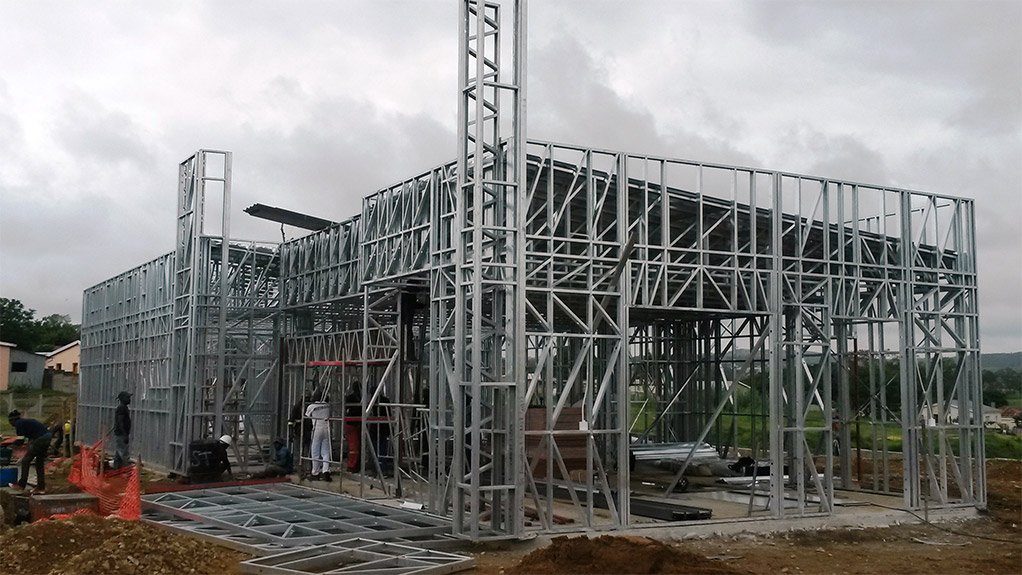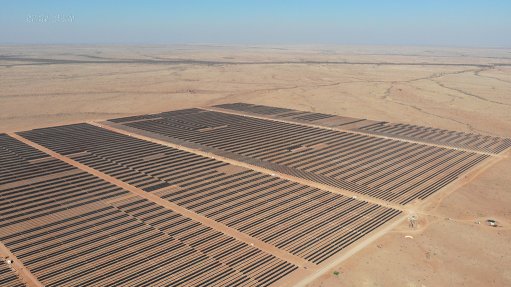Light steel frame building no longer ‘alternative’


KFC RESTAURANT IN UMTATA Several high-profile users, including the leading fast food chains in South Africa, are changing their building philosophy to include the rolling out of sustainable light steel frame building restaurants
It can be argued that light steel frame building (LSFB) is no longer an alternative building method in South Africa, as it has become the first choice of many leading contractors and developers, says Southern Africa Light Steel Frame Building Association (Sasfa) director John Barnard.
“Among the many indicators that reinforce this view is the steady growth in Sasfa’s membership to 81 company members, as well as the use of LSFB in the building of MacDonalds, Burger King and KFC restaurants and the fact that in the most recent Steel Awards, a record number of LSFB project entries, 36, were received,” he highlights.
He suggests that one of the main reasons that LSFB has become so popular is because it supports sustainable building as far as design and energy efficiency is concerned. “By using LSFB, the material wastage, transport costs and the carbon footprint of a building are significantly reduced. Also, the construction period required is significantly less than traditional building methods, allowing the building to be completed that much quicker.”
LSFB has been proven to be much more energy efficient than more traditional construction methods – both with regard to “embodied energy” of the materials and components, as well as “operational energy”, relating to heating and cooling of a building over its design life, explains Barnard. A recent research project carried out by the Council for Scientific and Industrial Research indicated that an LSFB will require less than half the energy needed to heat and cool an uninsulated masonry residential building to comfortable internal temperatures.
He further adds it is not only the intrinsic aspects of the LSFB method that have won the attention of the construction industry, but the way that it has been marketed by Sasfa over the years.
For example, training features high on the list of Sasfa’s priorities. A six-day course for LSFB contractors is presented regularly in Gauteng, Durban and Cape Town and, after the latest course, which was presented in Cape Town in September, the number of students who have completed the course successfully since 2007 increased to 315.
The association is currently working with the Western Cape’s Stellenbosch University to develop an LSFB training course for design engineers. “This should be ready for presentation early in 2016,” says Barnard.
Sasfa also presents an LSFB introduction lecture to building science students at universities on request.
The association is also the regulator of codes and standards in the industry. It is currently involved with the revision of several building codes and standards through its representation on the SANS 10400-L (Roofs) committee, the South African Bureau of Standards Steering Committee SC98C and others. Sasfa is further responsible for the revision of SANS 517 LSFB and was also involved in the revision of the National Home Builders Registration Council (NHBRC) handbook.
“To promote quality in LSFB, Sasfa carries out code compliance investigations on request, [while a] certification process will soon be rolled out to builders – site inspections will be arranged by a team of specialists to assess builders’ building practices,” Barnard points out.
He adds that it has been confirmed that builders do not need an Agrément Certificate if the building is designed to comply with SANS 517. “Only a rational design by a competent person (an engineer) is required.”
Sasfa has had great success in maintaining contact with industry and Barnard says this will continue through workshops with architects, being involved in building industry exhibitions, presentations of lectures at conferences, by serving on the Industry Advisory Committee of the NHBRC, Sasfa’s technical training committees and the industry feedback meetings.
Market Expansion
Barnard says a growing number of enquiries have been received in the past year from neighbouring countries. “Sasfa has signed up members in Namibia and Zambia and is in contact with several other countries in the Southern African Development Community region. “We are pleased that the interest in this exciting building method is not confined to South Africa. Its advantages are spreading across the region where, undoubtedly, its efficiency, both from a financial and an environmental perspective, will make a palpable difference to the developers’ [various] projects.”
Overall, the LSFB market is growing significantly and indications are that this trend will continue well into the future. This is indicated by the several high-profile users, including the leading fast food chains in South Africa, which are changing their building philosophy to include the rolling out of sustainable LSFB restaurants across the country, while several high-profile architects are designing aesthetic and practical houses across South Africa. “One should also not ignore the significant growth of LSFB in multistorey office and commercial buildings, where [the building method] is replacing heavy masonry curtain walls,” adds Barnard.
Comments
Press Office
Announcements
What's On
Subscribe to improve your user experience...
Option 1 (equivalent of R125 a month):
Receive a weekly copy of Creamer Media's Engineering News & Mining Weekly magazine
(print copy for those in South Africa and e-magazine for those outside of South Africa)
Receive daily email newsletters
Access to full search results
Access archive of magazine back copies
Access to Projects in Progress
Access to ONE Research Report of your choice in PDF format
Option 2 (equivalent of R375 a month):
All benefits from Option 1
PLUS
Access to Creamer Media's Research Channel Africa for ALL Research Reports, in PDF format, on various industrial and mining sectors
including Electricity; Water; Energy Transition; Hydrogen; Roads, Rail and Ports; Coal; Gold; Platinum; Battery Metals; etc.
Already a subscriber?
Forgotten your password?
Receive weekly copy of Creamer Media's Engineering News & Mining Weekly magazine (print copy for those in South Africa and e-magazine for those outside of South Africa)
➕
Recieve daily email newsletters
➕
Access to full search results
➕
Access archive of magazine back copies
➕
Access to Projects in Progress
➕
Access to ONE Research Report of your choice in PDF format
RESEARCH CHANNEL AFRICA
R4500 (equivalent of R375 a month)
SUBSCRIBEAll benefits from Option 1
➕
Access to Creamer Media's Research Channel Africa for ALL Research Reports on various industrial and mining sectors, in PDF format, including on:
Electricity
➕
Water
➕
Energy Transition
➕
Hydrogen
➕
Roads, Rail and Ports
➕
Coal
➕
Gold
➕
Platinum
➕
Battery Metals
➕
etc.
Receive all benefits from Option 1 or Option 2 delivered to numerous people at your company
➕
Multiple User names and Passwords for simultaneous log-ins
➕
Intranet integration access to all in your organisation



















